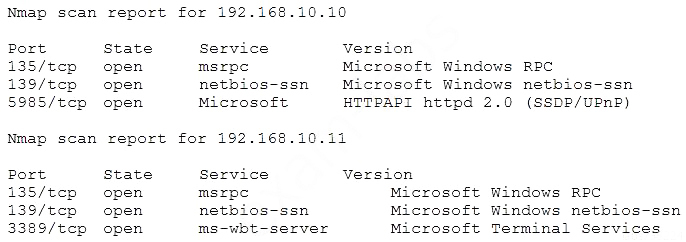During a penetration test, a tester is in close proximity to a corporate mobile device belonging to a network administrator that is broadcasting Bluetooth frames. Which of the following is an example of a Bluesnarfing attack that the penetration tester can perform?
A. Sniff and then crack the WPS PIN on an associated WiFi device.
B. Dump the user address book on the device.
C. Break a connection between two Bluetooth devices.
D. Transmit text messages to the device.
A. Sniff and then crack the WPS PIN on an associated WiFi device.
B. Dump the user address book on the device.
C. Break a connection between two Bluetooth devices.
D. Transmit text messages to the device.



